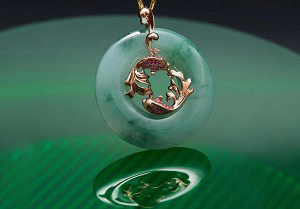The special optical effect in jewelry and jade, friends may have seen or heard, we will talk about the special optical effect in jewelry and jade today, see how much you know.
The special optical effect of jewelry and jade is a special optical effect that is rare in gemstones and can enhance the value of a gem. The special optical effect of jewelry and jade refers to the action of refraction, reflection, interference and diffraction in jewelry and jade under visible light irradiation.
Special optical effects are mainly the following: cat's eye effect cat's eye effect is a bright band of light on the surface of the arc of the jewelry and jade, the band of light along with the jewelry and jade or the movement of the light. Another interesting aspect of the cat-eye effect is that when a cat-eye gem is placed under two sources of light, the two light bands open and merge as the gem rotates, just like a cat's eyes.
In the cat's eye effect jewelry jade can be directly called cat's eye, only chrysoberyl cat's eye. And other jewelry and jade cat's eye to add jewelry and jade name, such as "quartz cat's eye", "tourmaline cat's eye", can not be referred to as cat's eye. Starlight effect in visible light irradiation, in the surface of the camber-shaped jewelry jade appeared two or more than two cross bright line phenomenon, known as starlight effect. The bright bands are called starlines and are usually two, three, and six.
They are called four stars, six stars and twelve stars respectively. The probability of twelve-shot starlight is higher in red and sapphire, because there are abundant rutile acinules in red and sapphire, which provides good conditions for starlight effect. Besides red and sapphire, other gemstones also have starlight effect. Such as: garnet, spinel, cordierite and so on.
Color change effect The color change effect is when a gem shows different colors in daylight or light. The most famous of the color-changing effects is alexandrite, which is a chrysoberyl with color-changing effects. Alexandrite is known as "emerald by day, ruby by night". The alexandrite, also known as the Alexandrite, is said to have been discovered in 1830 by Alexander THE Second of Russia, on his birthday. So it was called the Alexandrian stone. Sapphire and garnet also have a discoloration effect.
Color change effect A phenomenon in which the color of a jewel changes with the change of light or the change of viewing Angle. Typical for this effect is opal jewelry. On the Opal, you can see ruby red, amethyst, emerald green, colorful, integrated, beautiful. Opal's mineral is called opal.





